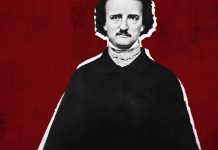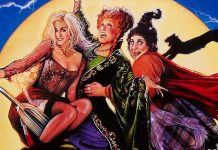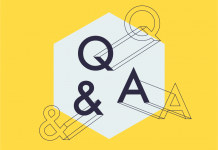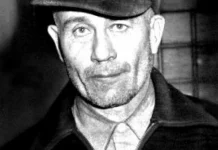In the past, legends served to explain why some historical events have occurred. In this way, the legends have been perpetuated over the centuries, transmitted generationally to the present day .
In the next few lines we will delve into the characteristics of these narrations that, as is often said, are not entirely true, but they are not lies either; and we will offer some well-known examples.
- You may be interested: The 14 best short legends for all ages.
What is a legend
Legends are stories that have been used to make sense of events that have occurred in the history of a place. However, the legend has the particularity that it moves between the realm of the realistic and the supernatural , adding touches of fiction to the story, which gives it its most characteristic hallmark. Characteristics of the legends
Now, a legend has other distinctive features that we will detail. 1. They are timeless
No matter how many decades, centuries or thousands of years ago they are supposed to have happened, legends have been used as a resource to offer us an alternative explanation to the official story, and not always with solid evidence support, about certain events that have occurred. 2. They form an important part of the tradition of the towns
Thanks to the oral and written transmission throughout generations, the legends form an important part of the folklore of the towns and, consequently, of the identity of their people. There is no place on the planet that does not have a legend of any kind rooted in its oral tradition , because as we said at the beginning, these have been used since time immemorial as a means to instruct and entertain. 3. They undergo modifications as they are transmitted
A particularity of legends is that they can vary depending on who tells them, so it is not uncommon for two different narrators to add or omit details, or alter the story at some point ; although the central core and its main elements remain (practically) unchanged. 4. A mysterious explanation for events located in time
It has always been said that a legend is not 100% real, but at the same time, it is not a lie either. This statement is given because a legend starts from an event with a historical basis, but that apparently fictitious chapters have been added around it, in order to make up the truth and make it more attractive; either deliberately or as a consequence of word-of-mouth distortions.
5. Do not confuse ‘legend’ and ‘myth’
We often see them as synonyms, but the truth is that they are not entirely interchangeable words.
Myths are purely fantastic stories around which a given culture tries to make its origins known. Generally, myths use supernatural beings and events that take place in an uncertain time, many years ago.
That is the difference with the legend, because although it can contain and contains fantasy ingredients, it is located in a specific time, which gives it more credibility than the myth , even without being able to fully prove it.
The types of legend according to their theme
According to the theme that nourishes the legendary narratives, we can classify them by legends about historical events, which explain the origin of natural phenomena or geographical accidents, about the afterlife or of a religious nature. Here are some examples. 1. Historical
legends Also called classical legends, historical legends are legendary stories based on real historical events, usually wars or conquests . They had their heyday during romanticism, when the towns tried to underline their greatness through epic stories that mixed legend and reality.
For example, one of the most magical and interesting historical legends is that of “El Dorado”, originating in the 16th century andbased on a legendary city supposedly located in the Viceroyalty of New Granada that contained large gold reserves. The legend of the White City or “lost city of the monkey god” is also popular.
Another inspiring historical legend is that of Barbarossa, originating during the time when bloodthirsty and barbarous pirates were the masters of the seas. This is how the character of Barbarossa was forged, a pirate named Aruj, a native of Lesbos (Greece) , who fought against the Christians in the service of the Turks and sowed panic on the Costa Brava. 2. Etiological legends
Just as historical legends try to explain the birth of a nation or the background of a historical fact, etiological legends are fantastic narratives that explainthe origin of a natural phenomenon or a geographical accident. That is why it bears a very close relationship with fables or mythological cosmogonies.
These types of legends are widespread, especially in Latin America, where nature reaches wild and colossal dimensions. For example, the legend of the Cerro Prieto volcano tells the story of a sorceress who had sacrificed a village maiden , and her brother avenged her by setting fire to the sorceress causing the volcano to erupt.
In Spain, the Basque Country is a land especially rich in myths and legends. One of the most interesting etiological legends is the origin of the sun and the moon, which also serves to explain the origin of the typical flower of that place, the eguzkilorea.. According to legend, the mother earth Amalur gave the sun and the moon to men to protect them from the monsters of darkness, and the eguzkilorea flower as a protection amulet. 3. Eschatological
legends Eschatological legends are created from religions, beliefs and doctrines that project a transit to the afterlife, to the afterlife or the underworld . In this parallel reality, narratives rich in facts and characters are elaborated that bear a great resemblance to ghost and horror stories.
An example of this is the famous legend of La Llorona, in Mexico, one of the most widespread of the afterlife legends. It talks about a woman who murderedthrowing her own baby into the river and, realizing what she had done, she ran downstream screaming. It is said that at night in the streams you can hear his cries and cries.
Another widespread legend about the afterlife is the legend of Sleepy Hollow, a story about the existence of a headless horseman who rides to battle in the valley of Sleepy Hollow, in New York, and who is supposed to be the ghost of an ancient American Revolutionary War combatant. 4. Religious legends
Religions of all kinds base their beliefs on mythological and legendary facts in which facts and characters of reality are confused with the construction of a fantastic universe. The function of religious legends is to provide content for the principles and values of their belief system, such as justice, generosity or sin.
In Christianity, one of the most widespread legends is that of the Universal Flood, according to which a planetary flood devastated the earth. The narrative contained in the Book of Genesis says that only Noah and his family were saved, and he, on board a great ark, saved a couple of each species with which after the flood he managed to recompose humanity.
A religion very rich in legends is Buddhism, and many of them focus on the very birth of Buddha. According to the most widespread, his mother, Princess Mahamaya, had a premonitory dream whereShe was bathed in the crystal clear waters of the Himalayas , before giving birth to a prince who would become God. Mahamaya died seven days later. The types of legend according to their origin
We can also classify this type of narration according to where they originate, with which we have the legends that are born in urban spaces, those rooted in rural towns, and the stories of each small place. 1. Urban legends
These are usually the most popular legends, because they spread quickly by word of mouth thanks to their appeal. The great attraction of these narratives is that they usually have a disturbing and terrifying background based on situations that could be real, opening a door to the possibility of the unreal.
There are many such legends that, moreover, vary by place and change over time. One of the most widespread is that of the girl on the curve , according to which the ghost of an accident victim appears to drivers at night to warn them to be careful on curves.
The Japanese are especially sadistic with this type of narrative. A Japanese urban legend known as “Teke teke” makes your hair stand on end , in which the body split in half of a girl who had been hit by a train chases young people at night. “Teke teke” is the noise she makes when she walks with her elbows. 2. Rural Legends
The rural environment, susceptible to suggestion, has always been a great propagator of mythical and legendary narratives where magical characters and miraculous events parade in fascinating stories. With them it is intended to tell the origin of a place or appeal to the protection of supposed divinities on the harvest and the properties.
Without going any further, in the leafy and misty valley of the Baztan, in Navarra, the legend of the presence of the Basajaun spreads, a mythological being of monstrous proportions and long hair that, far from having negative connotations, is known as the Lord of the Forests and protector of flocks.
Again, Mexico is a particularly creative place when it comes to legends, and in many rural towns the legend of the Charro Negro, a handsome horseman who is the very incarnation of the devil, is passed down from generation to generation, tempting local maidens to lead them on the back of his horse towards a journey of no return. 3. Local legends
Although they are not very widespread for obvious reasons, since they are only known by the people of each small town, in reality they are the most given to suggestion , being rooted in local beliefs that their locals believe at face value. There are as many as regions and towns, as rich in nuances as in surprising stories.
In some of them religious elements are mixed. In the Catalan city of Manresa, during a period of long drought, the county bishop refused to authorize the construction of a ditch to channel water, until a mysterious light from the magical mountain of Montserrat entered through the window of the church as a providential sign.
A large concentration of local legends revolve around Trasmoz, in Zaragoza, a place that was excommunicated during the witch hunt for being the scene of numerous covens . After the town was excommunicated, the abbot spread a curse that locals say continues to wreak havoc.
- You may be interested: The 12 creepiest urban legends and the truth in them.
3 examples of famous legends
Here are 3 examples of famous legends of different kinds: horror, religious and historical. 1. The Mothman
Perhaps not everyone has heard of this legend, which is also part of cryptozoology, but in the United States they know that it is the Mothman or ‘Mothman’. It was in 1966, in Point Pleasant (West Virginia), when the inhabitants of this town began to see a winged, humanoid-looking being flying over the town. During the days before Christmas, and coinciding with the sightings, some neighbors had dreams that seemed to herald a tragedy in the making.
On December 15 of the following year, the Silver Bridge collapsed, after being unable to support the weight of a long line of cars that collapsed the structure. The total balance was 46 deaths. After the event, the locals considered that the visions of that strange figure of 2 meters and red eyes that they had had for a whole year , had been an omen of death.
From that moment, the Mothman ceased to be seen in Point Pleasant and began to appear in other places on the planet during the following years, until today (Chicago, Cornwall, Santiago de Chile and in Chernobyl itself, to name a few examples) .
Chance would have it that prior to all her appearances, UFO activity had been recorded in the area. 2. Shroud of Turin
Religions have given rise to many legends of all kinds. Legend for some or proven evidence for others, the one that concerns the ‘Holy Savannah’ is one of the most famous of Catholicism.
Supposedly, the Shroud of Turin is the cloak that covered Jesus’ body for 3 days after his crucifixion before he was resurrected. He was bleeding so much from the severity of his wounds that the shape of the iconic face of Christ (a man with thin features, long hair and a beard) was engraved on the linen cloth. Since then and for centuries, the garment has been preserved as reliable proof that the events narrated in the New Testament are true.
Despite the fact that many faithful make a pilgrimage to Turin to venerate the sacred cloak every year, its authenticity has not yet been confirmed and multiple plausible explanations have been considered as to why it could be a fraud and not a miracle. 3. King Arthur
An example of historical legend is the one that surrounds this figure, key to the history of the British Isles and French Brittany. It is said that Arthur , along with his twelve brave knights , roamed the English countryside performing great feats during the medieval ages, including trying to find the most famous relic of all time: the Holy Grail.
However, historians do not agree when locating the Arthurian legend in time, since new sources assure that it would have taken place at the end of Roman times.
Be that as it may, neither the existence of Arthur, Lancelot, Guinevere (or the rest of his knights), nor that of the mythical city of Camelot, have been proven.
- You may be interested: Dystopia: definition, meaning, types and examples.






































